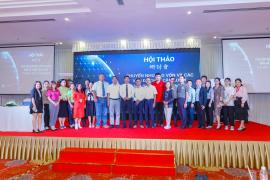FASB issues proposed changes to cryptoasset accounting, disclosure
FASB is seeking comments on a proposed Accounting Standards Update (ASU) that is intended to improve the accounting for and disclosure of certain cryptoassets.
During its recent agenda consultation process, FASB said it received feedback that the "accounting for cryptoassets as indefinite-lived intangible assets, which is a cost-less-impairment model, does not provide investors with decision-useful information or reflect the underlying economics of those assets."
"We responded to that feedback with the proposed ASU, which would provide investors greater transparency into the fair value of cryptoassets held by entities, as well as additional disclosures about the types of cryptoassets held and changes in those holdings," FASB Chair Richard Jones said in a news release.
The amendments in the proposed ASU are intended to improve the accounting for certain cryptoassets by requiring an entity to measure those cryptoassets at fair value each reporting period with changes in fair value recognized in net income, according to FASB. The proposed amendments would also improve the information provided to investors about an entity's cryptoasset holdings by requiring disclosure about significant holdings, restrictions, and changes in those holdings.
The amendments in the proposed ASU, Intangibles — Goodwill and Other — Crypto Assets (Subtopic 350-60): Accounting for and Disclosure of Crypto Assets, would apply to all entities holding cryptoassets that meet all the following criteria:
- Meet the definition of "intangible asset" as defined in the FASB Accounting Standards Codification Master Glossary;
- Do not provide the asset holder with enforceable rights to, or claims on, underlying goods, services, or other assets;
- Are created or reside on a distributed ledger based on blockchain technology;
- Are secured through cryptography;
- Are fungible; and
- Are not created or issued by the reporting entity or its related parties.
Source: www.journalofaccountancy.com
---
 WinWin Audit Firm
WinWin Audit Firm















